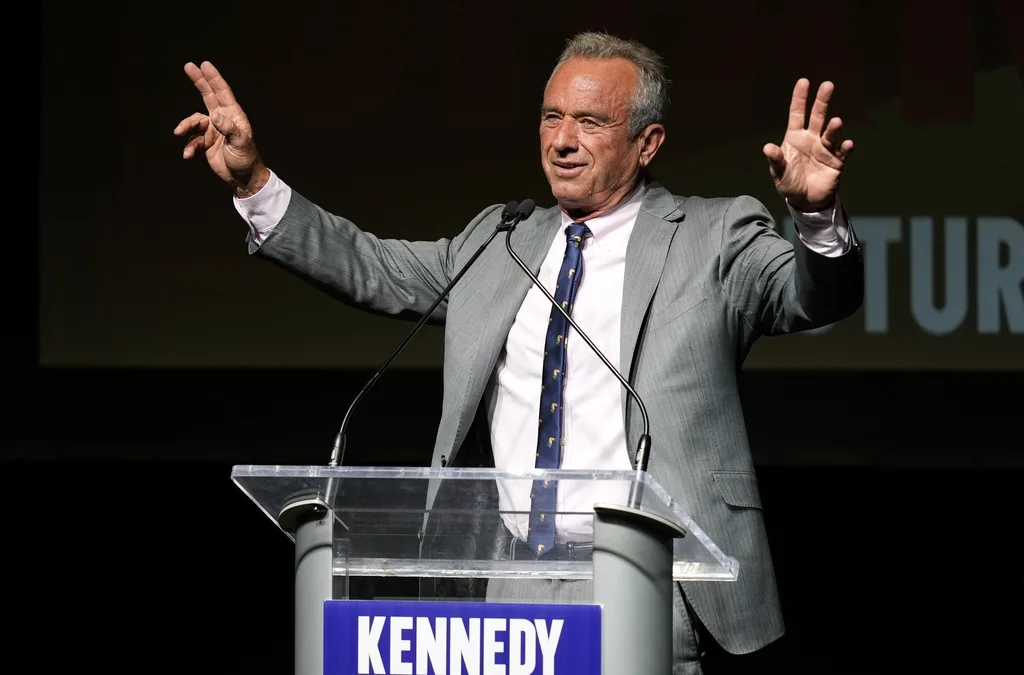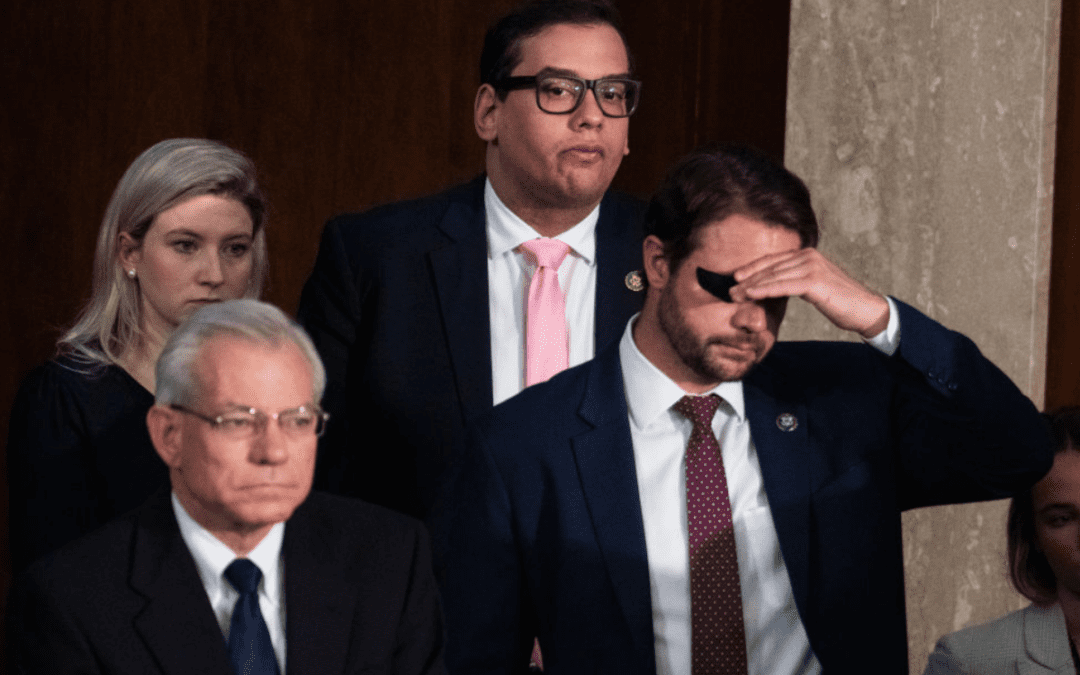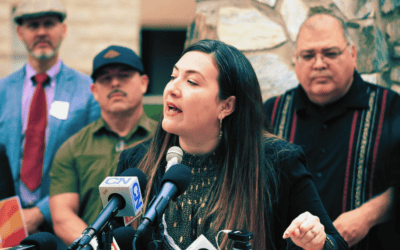
Image via Shutterstock
Right-wing extremists and white supremacists have gotten “leaner and meaner” in the Trump era. It’s unclear what happens next.
A man in West Virginia was indicted on federal charges for selling devices that convert firearms into machine guns to hundreds of anti-government extremists this week, spotlighting the continuing threat presented by right-wing violence in the United States.
On Tuesday, Timothy John Watson was indicted for conspiracy against the US government and selling machine gun conversion kits to hundreds of clients, which included right-wing extremist groups like the Boogaloo Movement, neo-Nazis, white supremacists, anti-government, and militias. One of his clients includes a man accused of shooting and killing two police officers in California, the New York Times reported.
Watson was a small-time operator, but that doesn’t surprise experts on extremism. After the deadly 2017 rally in Charlottesville, Virginia, violent, right-wing extremists have become “leaner and meaner,” and arguably, more prone to violence.
Watson’s arrest comes at a time when white nationalist and far right groups have grown exponentially. The Southern Poverty Law Center’s (SPLC) latest annual report on hate and extremism in the United States found a 55% increase of white nationalist groups from 2017 to 2019. In addition to its expansion, many of these white-nationalist and right-wing groups believe in a fringe philosophy called “accelerationism,” using mass violence to achieve their objective of destroying a democratic society.
These groups have already committed extreme violence over the last two decades. The Center for Strategic and International Studies (CSIS) counted more than 329 people have been killed in violent attacks perpetrated by right-wing extremists and American white supremacists in the last 26 years. The influence and power of white nationalist groups have expanded to the point where the Department of Homeland Security (DHS) has considered it to be “the greatest terrorist threat to the Homeland.”
Among these far-right groups, white supremacists are believed to be the most dangerous threat.
“Lone offenders and small cells of individuals motivated by a diverse array of social, ideological, and personal factors will pose the primary terrorist threat to the United States,” the DHS wrote in a draft report released in September. “We assess that white supremacist extremists – who increasingly are networking with likeminded persons abroad – will pose the most persistent and lethal threat.”
The West Virginia Case Is Hardly the Only Right-Wing Threat to Face the United States
Watson is just the latest example of an alarming trend of a lone wolf either participating as an accomplice or carrying out acts of right-wing violence. Brian Levin, the director of The Center for the Study of Hate and Extremism at California State University, San Bernardino, told COURIER that right-wing extremist and fringe groups have decentralized since the 2017 Unite Right Rally in Charlottesville, Virginia. That rally was considered to be the largest and most violent public assembly of white supremacists at the time, and resulted in the killing of social justice activist Heather Heyer by a white supremacist who had participated in the rally.
The mass outrage against the rally prompted several of these extremist groups to disassemble, or oust their leadership. Some members of these groups were arrested and others were sued in civil court. Although the number of large, organized extremists groups has declined since then, the strategies and activities of right-wing extremists has diversified.
“What we’re concerned about now is these over-the-top organizations that were publicly identifiable at Charlottesville have now yielded a leaner and meaner type of extremist, which is now showing up in the hate crime data,” Levin told COURIER, referring to the FBI’s annual hate crime report’s findings documenting that hate-motivated killings more than doubled in 2019 from the previous year.
Angela Nagle, the author of “Kill All Normies: Online Culture Wars From 4Chan and Tumblr to Trump and the Alt-Right,” has analyzed how white-nationalist groups transitioned from online attacks, such as cyber harassment and trolling, to real world danger. She agrees with Levin’s assessment.
In an interview with Haaretz, Nagle said that even though the alt-right movement that emerged in Charlottesville may have dissipated, the threat of violence has become more prevalent.
“I worry that there’s this group of particularly younger men who have not been convinced that they’re wrong,” Nagle told Haaretz. “It’s not that they’ve been convinced that any of their critiques of liberalism or feminism are wrong, because there is a real crisis in liberalism and its ability to defend its own ideas and inspire people. That problem is not going to go away. It’s just going to continue festering and take different forms.”
As the organization structure of right-wing extremists changed, so did their behaviors. Their recruitment strategies also established internet communities for mobilizing efforts on Facebook or by establishing their presence on social media sites more conducive to their mission, like Parler.
All of this means the United States could see more lone-wolf extremists carrying out actions.
“We’re now in an era of lethal, do-it-yourself far-right extremism,” Levin added. “It’s done by loners who were incubated in an increasingly online ecosystem, which includes larger commercial platforms…and extremism down to more encrypted, private, affinity-based platforms.”
The new era of decentralized right-wing extremism also means that it will be more difficult to monitor, track, and prevent domestic terrorism plots created by right-wing extremists.
“Prior to Charlottesville, the big thing was looking at the over-the-top groups,” Levin added. “We’re looking at Proud Boys—and these groups do violent stuff—but I think the things to really look at are Atomwaffen Division and The Base-type groups.”
Atomwaffen Division, a neo-Nazi terrorist network, and The Base are smaller groups that do not have an overt public face like the Proud Boys, but could pose a greater danger. The Base, for example, is a neo-Nazi paramilitary hate group with active factions in the United States, Canada, Australia, South Africa, and the United Kingdom. They want to establish an ethnostate through acts of terrorism, and the violent overthrow of democratically-elected governments.
In January, a few members of the group, which organizes “race war preppers” and “hate camps,” were arrested for allegedly transporting and possessing machine guns, and for allegedly plotting an act of terrorism at a gun-rights rally to launch a “civil war.”
According to Levin, this fragmenting of the movement into the social media space could lead to more violence than we’ve seen. “Once a movement finds themselves more attenuated from the mainstream, they tend to act more violently,” he said.
One doesn’t have to look too far for an example. In May, Timothy Wilson (not to be confused with the aforementioned Timothy Watson) was shot and killed in a FBI shootout outside a Belton, Missouri hospital. Wilson, a right-wing extremist, had planned to blow up the hospital treating COVID-19 patients after the mayor issued a stay-at-home order. He also intended to bomb other targets, including a mosque and a predominantly Black church. The FBI were able to circumvent Wilson’s terrorist plots by keeping watch on the 36-year-old man’s online presence, where he often spewed anti-government and racist rhetoric online.
Yes, President Trump Has Only Added Fuel to the Extremist Fire
President Donald Trump has been instrumental in channeling those fringe far-right ideas into the mainstream, and has even incited violence against marginalized communities. “What we saw over the last several years was the president act as a de facto messenger and leader, not only for a base in the mainstream, but for folks on the fringes as well,” Levin said.
However, Trump’s extremist rhetoric doesn’t conveniently fit into traditional categories of bias- and hate-motivated crimes. Instead, his targets extend far beyond the scope of religion, race, and nationality. This includes journalists, elected officials, public health officials, school officials, doctors, scientists, and protestors speaking out against racial injustice.
Trump targets anyone who’s in that circle of stress, Levin added, and now those who question or scrutinize his actions and behavior during his presidency will face the wrath of fringe extremists who will take it upon themselves to act.
“We put out a conflict advisory on April 17th saying, ‘Look beyond the traditional categories because now we’re seeing people being targeted, not only at the workplace but in their homes,’” Levin said. “We said this back in April. And we’re seeing that with regard to people as diverse as elected officials, public health officials, school officials, and people involved in election campaigns.”
Michigan Gov. Gretchen Whitmer survived this first-hand. After Trump encouraged armed militia members to take action against Whitmer’s coronavirus public health mandates, the FBI and Michigan State Police arrested 13 right-wing domestic terrorists for conspiring to violently overthrow the governor. Their elaborate plan included kidnapping and executing Whitmer, and storming the state Capitol to overthrow the government with the hopes of also launching a civil war. Details broke Thursday of backup plans the group made to hold the state capitol building hostage and commit public executions, or burn down the statehouse and leave no survivors.
Now, Levin says there is uncertainty of what will come when President-elect Joe Biden is sworn into office in January. With the Trump administration coming to an end, so will the former real estate mogul’s presidential platform—one he has used to stoke racial divides and defend violent actions of white supremacists.
In other words, Trump will no longer have the official platform he has now, and neither will hate-based extremist groups have access to the highest office in the United States. But Levin predicts that extremism will become more diversified and fragmented, and they will find new local targets.
QAnon is one current example of this. “Yes, these total extreme groups are losing leadership and [no longer] have the organizational vibrancy,” Levin said. “But we’ve seen with both QAnon and the ’LIBERATE’ movement that these more amorphous and larger reservoirs for grievance can become conduits to the more extreme radicalized folks that conduct violence.”
But will a new administration bringing change and a reversal of racist and bigoted policies result in more violence from the “most persistent and lethal threat” in the nation?
Even Levin doesn’t know for certain, but he does expect to see an uprising.
“When that cord is cut—when the far-right has peaked with regard to its ability to traverse into the mainstream, will it become a violent cornered, porcupine? We don’t know. But social media, the activities of the president and others, as well as catalytic events, and how those events can be spun in a fear-mongering feedback loop are all going to be important for what goes forward.”

He said what? 10 things to know about RFK Jr.
The Kennedy family has long been considered “Democratic royalty.” But Robert F. Kennedy, Jr.—son of Robert F. Kennedy, who was assassinated while...

Here’s everything you need to know about this month’s Mercury retrograde
Does everything in your life feel a little more chaotic than usual? Or do you feel like misunderstandings are cropping up more frequently than they...

Arizona expects to be back at the center of election attacks. Its officials are going on offense
Republican Richer and Democrat Fontes are taking more aggressive steps than ever to rebuild trust with voters, knock down disinformation, and...

George Santos’ former treasurer running attack ads in Arizona with Dem-sounding PAC name
An unregistered, Republican-run political action committee from Texas with a deceptively Democratic name and ties to disgraced US Rep. George Santos...




